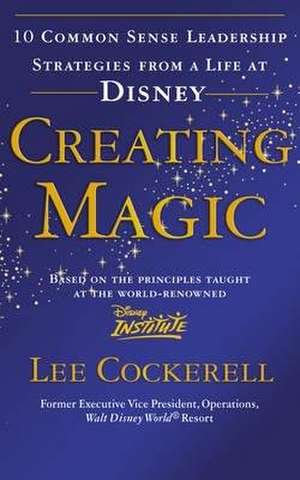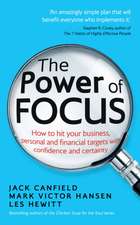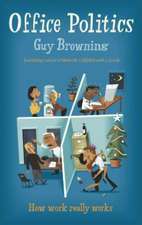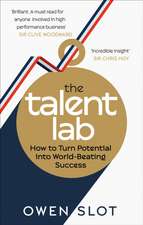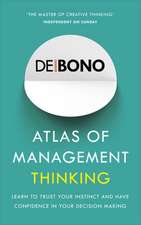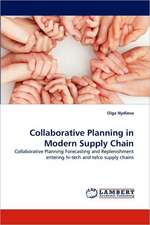Creating Magic
Autor Lee Cockerellen Limba Engleză Paperback – 2 iul 2009
| Toate formatele și edițiile | Preț | Express |
|---|---|---|
| Paperback (1) | 79.70 lei 26-32 zile | +28.47 lei 7-13 zile |
| Ebury Publishing – 2 iul 2009 | 79.70 lei 26-32 zile | +28.47 lei 7-13 zile |
| Hardback (1) | 172.46 lei 3-5 săpt. | |
| Broadway Business – 30 sep 2008 | 172.46 lei 3-5 săpt. |
Preț: 79.70 lei
Preț vechi: 95.13 lei
-16% Nou
Puncte Express: 120
Preț estimativ în valută:
15.25€ • 15.92$ • 12.62£
15.25€ • 15.92$ • 12.62£
Carte disponibilă
Livrare economică 20-26 martie
Livrare express 01-07 martie pentru 38.46 lei
Preluare comenzi: 021 569.72.76
Specificații
ISBN-13: 9780091929121
ISBN-10: 0091929121
Pagini: 288
Dimensiuni: 135 x 212 x 25 mm
Greutate: 0.32 kg
Editura: Ebury Publishing
Locul publicării:United Kingdom
ISBN-10: 0091929121
Pagini: 288
Dimensiuni: 135 x 212 x 25 mm
Greutate: 0.32 kg
Editura: Ebury Publishing
Locul publicării:United Kingdom
Notă biografică
Lee Cockerell
Extras
CHAPTER ONE
MAKING MAGIC
It's not the magic that makes it work; it's the way we work that makes it magic." Everyone who works at Walt Disney World Resort learns that principle, and the result has been magic for the Guests and for the bottom line. Now you can create magic too--for your organization, your family, and your community--by following the leadership strategies in this book.
During my sixteen years as a senior Disney executive, I repeated that phrase about making magic hundreds of times. But its full magnitude hit me with hurricane force--literally--in the summer of 2004. That's when Disney World was hammered by three major hurricanes in a little more than a month. Normally, tropical storms do not cause heavy damage in Orlando, as it is about fifty miles from both coasts. In fact, the city had not suffered a direct hit in forty-four years. Then came 2004 and the one-two punch of Charley and Frances.
In August, Hurricane Charley swept through Orlando on Friday the thirteenth with gusts of up to 105 miles per hour, ripping down trees and power lines and tearing the roofs off buildings. The area had not yet fully recovered when Frances came roaring in two weeks later--on Labor Day weekend, no less, when Disney World was host to seventy-five thousand guests. We were forced to close the theme parks on both occasions, something we had done only twice before, once on 9/11 and once in 1999 for Hurricane Floyd, which fortunately veered away at the last minute. But this time we had to batten down the hatches, and when your hatches are spread over forty-seven square miles, it's a monumental task.
What I remember most about the ordeal is not the terrifying winds or the sleepless nights in the emergency operation center (EOC), where my team and I had gathered to make plans to ensure the safety of our Guests and fellow Cast Members. Instead, I remember the dedication of our staff, the precision of our communications, and the smooth way everyone did what he or she was supposed to do even though it'd never been done before. I remember teams of dedicated people tying down chandeliers, stacking tables and chairs and roping them together, and strapping vending carts to the ground. I remember Mickey and Minnie and Cinderella and Goofy cheering up frightened children in the hotel lobbies. Mostly, I remember the five-thousand-plus Cast Members who spent the stormy nights on the property so they could help at any hour and in any way they could, and the countless others who showed up with their sleeves rolled up the minute it was safe to leave their homes.
I also remember this: When Charley finally subsided, around midnight, exhausted Cast Members worked through the night, clearing debris, getting supplies to where they were needed, and hauling away thousands of damaged trees. It was a monumental effort, with everyone acting as one to get the parks ready for our Guests, some of whom had been stuck in their rooms for eighteen hours. The next morning, we opened on time. And the families who poured in were astonished to find the sunlit theme parks looking spotless and the operations running as if nothing had happened. What they could not see was the massive teamwork behind the scenes that made it all possible or the stress and fatigue behind the smiling faces that greeted them. While many other attractions and businesses in central Florida remained closed and local municipalities were struggling to restore power and clear the roads, Disney was making magic.
As the executive vice president in charge of operations at Disney World, I could not have been more proud. All the work that my colleagues and I had done to instill strong leadership values throughout the company had clearly paid off. We already knew that our basic principles worked, but it's easy to think you're doing well when times are good. The real test comes when a crisis hits, and our response to this one validated everything I had learned and tried diligently to teach others. Thanks to the solid structures and processes we had in place, everyone knew exactly where to go and what to do. More important, each Cast Member was prepared, mentally and emotionally, to let the vision of Disney World govern everything he or she did: treat the Guests as cherished friends, exceed their expectations, and give them the best vacation experience of their lives. Everyone from top executives to rookies pursued this vision with remarkable dedication.
Soon I would be even more proud. Our company immediately set out to help Cast Members and area residents who had suffered major losses because of the hurricanes. Cast Members at every level of pay came through, either with direct donations or by converting their accrued vacation time into cash. With those funds and the millions more contributed directly by the Walt Disney Company, we were able to provide substantial financial aid, along with supplies, lodging, child care, and other services, to those in need.
All in all, what we saw in that tumultuous period is the kind of strong commitment and exceptional performance that any organization can enjoy as long as its leaders treat people with respect and unite them all behind one common purpose. When things returned to normal and I read the hundreds of letters we'd received from grateful Guests, I made a personal decision: The minute I retired, I would write a book about Disney's leadership strategies, so that people in every industry and every walk of life could learn how to create the same kind of magic in their organizations and in their lives. This is that book, and I'm certain that no matter what position you now hold--whether you've just started your very first job or you're the CEO of a multinational corporation--you will be a better leader if you follow the ten common sense strategies that follow.
THE WORLD OF DISNEY WORLD
The enchanted realm called Walt Disney World is about the size of San Francisco, or twice the size of Manhattan. As the largest tourist destination and one of the biggest convention sites in the world, its 25,000 acres include 32 hotels with more than 31,000 rooms, hundreds of dining and retail locations, four major theme parks, a sports and recreation complex, a shopping and entertainment village, and 167 miles of roadway. With its 59,000 Cast Members, it is the largest single-site employer in the world. And my job was to know exactly what was going on in every nook and cranny of that vast domain.
For ten years I was responsible for making sure everything from the removal of trash to the operation of rides and attractions ran as smoothly and impeccably as a Swiss watch. In order to do my job, I had to know what our Guests felt about their time with us, and so I read their letters over the years, thousands of them, and I can say beyond a shadow of a doubt that it's not just the great weather, fabulous shows, and thrilling attractions that bring millions of people a year to Disney World. Those all are extremely important, of course, but what really drives the magic is the extraordinary service. How does Disney maintain that high-quality service? Each of the fifty-nine thousand Cast Members is trained to treat each and every Guest with the utmost care and respect. And they do this consistently because they are treated exactly the same way by the Disney leadership: with the utmost care and respect.
If that sounds like a commercial for a fluffy feel-good Disney movie, let me assure you it's not. It's a rational, muscular, no-nonsense business strategy. And its results are reflected in Disney's robust bottom line, not to mention its astonishing 70 percent return rate among visitors and the lowest employee turnover rate of any major company in the hospitality industry. The formula is simple: Committed, responsible, inspiring leaders create a culture of care, which leads to quality service, which leads to Guest satisfaction, which leads to measurable business results and a strong competitive advantage.
Products and services can easily be replicated. So if your company's competitive advantage is based on products and services alone, you are at risk. But if it's based upon products, services, and quality service, then you'll have a competitive advantage that's very difficult to match. And you can get quality service only by creating a caring, respectful, people-centered culture within your company. Take care of your people, and they will take care of your business, not just because they have to but because they want to.
KEEPING UP WITH CHANGE
Walt Disney himself created the template for quality service when he first envisioned theme parks more than half a century ago. Later, in 1982, the company's reputation got a powerful boost when Tom Peters praised it in his mega-selling book In Search of Excellence. Because Peters singled out the Disney training procedures, managers and executives from other companies started asking how they could emulate those methods.
Throughout the 1980s, Disney World continued to thrive financially. But by the early 1990s, the times were a-changin'. Competitors were starting to catch up, and certain aspects of the company's management style began to seem outdated. The autocratic, top-down leadership approach of the past was less and less welcome in the changing social landscape; management experts predicted that the coming generation of workers and managers would thrive better in a more democratic, participatory environment. One visionary leader who saw the writing on the wall was Judson Green, who was then the president of Disney's Theme Parks and Resorts division. If Walt Disney World was going to adapt to an evolving society and maintain its industry dominance, he realized, the corporate culture had to change.
Intuitively, Judson knew that the key to continued financial success was to provide Guests with a wonderful experience so they'd come back again and again and recommend the place to their families and friends. He reasoned that the Guests' satisfaction depended on the quality of service they received. After all, studies in a variety of industries have shown that it's not just the product that makes for satisfied customers; it's the way they are treated. Judson also knew what I too had learned over the course of my career: If you want your employees to deliver excellent service, you'd better provide them with excellent leadership. A few years later we tested this theory analytically, by conducting a research study. The results showed clearly that Guests were far more likely to return if they were satisfied with their previous visit, and their satisfaction level was highest when they had positive interactions with Cast Members. What was the key to producing that? Effective leadership. The study found that business units with the highest scores in Guest satisfaction were the same ones whose leaders received high ratings from their direct reports in qualities such as listening, coaching, recognizing people's efforts, and giving people decision-making authority. In short, great leadership leads to employee excellence, which leads to customer satisfaction and strong business results. In other words, the customer doesn't come first; leadership comes first.
So Judson Green and Al Weiss, the new executive vice president, set out to implement that formula by revamping the management style at Walt Disney World. That's where I came in.
In May 1993, I was vice president of resort operations at Euro Disney (now Disneyland Paris). My wife, Priscilla, and I were living in France, preparing for our son Daniel's wedding to our wonderful daughter-in-law, Valerie, when I was offered the post of senior vice president of resort operations at Walt Disney World, reporting directly to Al Weiss. I'm sure there were many reasons for that promotion, and one of them was surely my passion for leadership excellence. Judson, with whom I'd worked in Paris, knew that I had been studying the subject for many years and had implemented key leadership principles during my time with the company, as well as earlier, when I had worked for Marriott.
So Priscilla and I picked up and moved to Florida. Pretty soon I was playing a key role in transforming the corporate culture at the world's most successful resort. The mandate was clear: In an era of rapid change, our management style had to be as creative as the movies produced by Disney's animators and as innovative as the attractions dreamed up by Disney's Imagineers (creative designers). We needed leaders who could both manage the business and inspire our Cast Members to adapt to twenty-first-century demands.
A TIME OF TRANSITION
Disney was already renowned for its excellent training procedures at the time, but that training did not include leadership. This was about to change. Now we would make it our policy to promote leadership excellence among our Cast and follow through with clear expectations and ongoing education. And that meant everyone. The idea was to achieve leadership excellence by spreading responsibility and authority throughout the organization. We understood that anyone at any level--from the landscape and cleaning crews right on up to the CEO of the whole organization--can exert leadership and make a positive difference. We let it be known that managers and executives would be evaluated not only on their bottom line results but on how those results were obtained.
Everyone was now expected to live up to specific values and ideals. "My way or the highway" would be replaced by "What do you think?" as leaders were expected to encourage ongoing input and to show Cast Members that their ideas were valued and their needs were taken seriously.
The road to performance excellence was bumpy at first; change always meets with resistance, and this was no exception. Some of the old guard were set in their ways and were unwilling or unable to get on board. We heard many variations of "It ain't broke, so why fix it?" and we lost some competent managers along the way; some of our leaders left the company in the first eighteen months. But eventually the new direction paid off big-time.
Most leaders saw merit in what we were doing and learned to adapt, even though it wasn't easy at times. One prime example was Tom Nabbe. Tom had started working for Disneyland in Anaheim when he was in junior high, just after the park opened. Red-haired and freckled, he was the very first "Tom Sawyer" on Tom Sawyer's Island. He later moved into supervisory roles and relocated to Orlando in 1971. Eventually he became the manager of distribution services for warehousing. After more than thirty years at Disney, Tom was used to the old management style, in which the people in charge handed down directions and the staff were expected to execute them exactly as they were told. Now, like all the other managers, Tom was asked to step back, loosen the reins, and inspire his team to develop its own procedures and discover its own solutions. "It was a time of introspection for me," he recalls. "I was a little skeptical at first, but the philosophy behind the Performance Excellence campaign started to make sense. I learned how to develop real teamwork, where everything we did supported what we called the three-legged stool: the Guests, the Cast Members, and the business metrics. I became a better leader, and everything got done better, faster, and cheaper."
MAKING MAGIC
It's not the magic that makes it work; it's the way we work that makes it magic." Everyone who works at Walt Disney World Resort learns that principle, and the result has been magic for the Guests and for the bottom line. Now you can create magic too--for your organization, your family, and your community--by following the leadership strategies in this book.
During my sixteen years as a senior Disney executive, I repeated that phrase about making magic hundreds of times. But its full magnitude hit me with hurricane force--literally--in the summer of 2004. That's when Disney World was hammered by three major hurricanes in a little more than a month. Normally, tropical storms do not cause heavy damage in Orlando, as it is about fifty miles from both coasts. In fact, the city had not suffered a direct hit in forty-four years. Then came 2004 and the one-two punch of Charley and Frances.
In August, Hurricane Charley swept through Orlando on Friday the thirteenth with gusts of up to 105 miles per hour, ripping down trees and power lines and tearing the roofs off buildings. The area had not yet fully recovered when Frances came roaring in two weeks later--on Labor Day weekend, no less, when Disney World was host to seventy-five thousand guests. We were forced to close the theme parks on both occasions, something we had done only twice before, once on 9/11 and once in 1999 for Hurricane Floyd, which fortunately veered away at the last minute. But this time we had to batten down the hatches, and when your hatches are spread over forty-seven square miles, it's a monumental task.
What I remember most about the ordeal is not the terrifying winds or the sleepless nights in the emergency operation center (EOC), where my team and I had gathered to make plans to ensure the safety of our Guests and fellow Cast Members. Instead, I remember the dedication of our staff, the precision of our communications, and the smooth way everyone did what he or she was supposed to do even though it'd never been done before. I remember teams of dedicated people tying down chandeliers, stacking tables and chairs and roping them together, and strapping vending carts to the ground. I remember Mickey and Minnie and Cinderella and Goofy cheering up frightened children in the hotel lobbies. Mostly, I remember the five-thousand-plus Cast Members who spent the stormy nights on the property so they could help at any hour and in any way they could, and the countless others who showed up with their sleeves rolled up the minute it was safe to leave their homes.
I also remember this: When Charley finally subsided, around midnight, exhausted Cast Members worked through the night, clearing debris, getting supplies to where they were needed, and hauling away thousands of damaged trees. It was a monumental effort, with everyone acting as one to get the parks ready for our Guests, some of whom had been stuck in their rooms for eighteen hours. The next morning, we opened on time. And the families who poured in were astonished to find the sunlit theme parks looking spotless and the operations running as if nothing had happened. What they could not see was the massive teamwork behind the scenes that made it all possible or the stress and fatigue behind the smiling faces that greeted them. While many other attractions and businesses in central Florida remained closed and local municipalities were struggling to restore power and clear the roads, Disney was making magic.
As the executive vice president in charge of operations at Disney World, I could not have been more proud. All the work that my colleagues and I had done to instill strong leadership values throughout the company had clearly paid off. We already knew that our basic principles worked, but it's easy to think you're doing well when times are good. The real test comes when a crisis hits, and our response to this one validated everything I had learned and tried diligently to teach others. Thanks to the solid structures and processes we had in place, everyone knew exactly where to go and what to do. More important, each Cast Member was prepared, mentally and emotionally, to let the vision of Disney World govern everything he or she did: treat the Guests as cherished friends, exceed their expectations, and give them the best vacation experience of their lives. Everyone from top executives to rookies pursued this vision with remarkable dedication.
Soon I would be even more proud. Our company immediately set out to help Cast Members and area residents who had suffered major losses because of the hurricanes. Cast Members at every level of pay came through, either with direct donations or by converting their accrued vacation time into cash. With those funds and the millions more contributed directly by the Walt Disney Company, we were able to provide substantial financial aid, along with supplies, lodging, child care, and other services, to those in need.
All in all, what we saw in that tumultuous period is the kind of strong commitment and exceptional performance that any organization can enjoy as long as its leaders treat people with respect and unite them all behind one common purpose. When things returned to normal and I read the hundreds of letters we'd received from grateful Guests, I made a personal decision: The minute I retired, I would write a book about Disney's leadership strategies, so that people in every industry and every walk of life could learn how to create the same kind of magic in their organizations and in their lives. This is that book, and I'm certain that no matter what position you now hold--whether you've just started your very first job or you're the CEO of a multinational corporation--you will be a better leader if you follow the ten common sense strategies that follow.
THE WORLD OF DISNEY WORLD
The enchanted realm called Walt Disney World is about the size of San Francisco, or twice the size of Manhattan. As the largest tourist destination and one of the biggest convention sites in the world, its 25,000 acres include 32 hotels with more than 31,000 rooms, hundreds of dining and retail locations, four major theme parks, a sports and recreation complex, a shopping and entertainment village, and 167 miles of roadway. With its 59,000 Cast Members, it is the largest single-site employer in the world. And my job was to know exactly what was going on in every nook and cranny of that vast domain.
For ten years I was responsible for making sure everything from the removal of trash to the operation of rides and attractions ran as smoothly and impeccably as a Swiss watch. In order to do my job, I had to know what our Guests felt about their time with us, and so I read their letters over the years, thousands of them, and I can say beyond a shadow of a doubt that it's not just the great weather, fabulous shows, and thrilling attractions that bring millions of people a year to Disney World. Those all are extremely important, of course, but what really drives the magic is the extraordinary service. How does Disney maintain that high-quality service? Each of the fifty-nine thousand Cast Members is trained to treat each and every Guest with the utmost care and respect. And they do this consistently because they are treated exactly the same way by the Disney leadership: with the utmost care and respect.
If that sounds like a commercial for a fluffy feel-good Disney movie, let me assure you it's not. It's a rational, muscular, no-nonsense business strategy. And its results are reflected in Disney's robust bottom line, not to mention its astonishing 70 percent return rate among visitors and the lowest employee turnover rate of any major company in the hospitality industry. The formula is simple: Committed, responsible, inspiring leaders create a culture of care, which leads to quality service, which leads to Guest satisfaction, which leads to measurable business results and a strong competitive advantage.
Products and services can easily be replicated. So if your company's competitive advantage is based on products and services alone, you are at risk. But if it's based upon products, services, and quality service, then you'll have a competitive advantage that's very difficult to match. And you can get quality service only by creating a caring, respectful, people-centered culture within your company. Take care of your people, and they will take care of your business, not just because they have to but because they want to.
KEEPING UP WITH CHANGE
Walt Disney himself created the template for quality service when he first envisioned theme parks more than half a century ago. Later, in 1982, the company's reputation got a powerful boost when Tom Peters praised it in his mega-selling book In Search of Excellence. Because Peters singled out the Disney training procedures, managers and executives from other companies started asking how they could emulate those methods.
Throughout the 1980s, Disney World continued to thrive financially. But by the early 1990s, the times were a-changin'. Competitors were starting to catch up, and certain aspects of the company's management style began to seem outdated. The autocratic, top-down leadership approach of the past was less and less welcome in the changing social landscape; management experts predicted that the coming generation of workers and managers would thrive better in a more democratic, participatory environment. One visionary leader who saw the writing on the wall was Judson Green, who was then the president of Disney's Theme Parks and Resorts division. If Walt Disney World was going to adapt to an evolving society and maintain its industry dominance, he realized, the corporate culture had to change.
Intuitively, Judson knew that the key to continued financial success was to provide Guests with a wonderful experience so they'd come back again and again and recommend the place to their families and friends. He reasoned that the Guests' satisfaction depended on the quality of service they received. After all, studies in a variety of industries have shown that it's not just the product that makes for satisfied customers; it's the way they are treated. Judson also knew what I too had learned over the course of my career: If you want your employees to deliver excellent service, you'd better provide them with excellent leadership. A few years later we tested this theory analytically, by conducting a research study. The results showed clearly that Guests were far more likely to return if they were satisfied with their previous visit, and their satisfaction level was highest when they had positive interactions with Cast Members. What was the key to producing that? Effective leadership. The study found that business units with the highest scores in Guest satisfaction were the same ones whose leaders received high ratings from their direct reports in qualities such as listening, coaching, recognizing people's efforts, and giving people decision-making authority. In short, great leadership leads to employee excellence, which leads to customer satisfaction and strong business results. In other words, the customer doesn't come first; leadership comes first.
So Judson Green and Al Weiss, the new executive vice president, set out to implement that formula by revamping the management style at Walt Disney World. That's where I came in.
In May 1993, I was vice president of resort operations at Euro Disney (now Disneyland Paris). My wife, Priscilla, and I were living in France, preparing for our son Daniel's wedding to our wonderful daughter-in-law, Valerie, when I was offered the post of senior vice president of resort operations at Walt Disney World, reporting directly to Al Weiss. I'm sure there were many reasons for that promotion, and one of them was surely my passion for leadership excellence. Judson, with whom I'd worked in Paris, knew that I had been studying the subject for many years and had implemented key leadership principles during my time with the company, as well as earlier, when I had worked for Marriott.
So Priscilla and I picked up and moved to Florida. Pretty soon I was playing a key role in transforming the corporate culture at the world's most successful resort. The mandate was clear: In an era of rapid change, our management style had to be as creative as the movies produced by Disney's animators and as innovative as the attractions dreamed up by Disney's Imagineers (creative designers). We needed leaders who could both manage the business and inspire our Cast Members to adapt to twenty-first-century demands.
A TIME OF TRANSITION
Disney was already renowned for its excellent training procedures at the time, but that training did not include leadership. This was about to change. Now we would make it our policy to promote leadership excellence among our Cast and follow through with clear expectations and ongoing education. And that meant everyone. The idea was to achieve leadership excellence by spreading responsibility and authority throughout the organization. We understood that anyone at any level--from the landscape and cleaning crews right on up to the CEO of the whole organization--can exert leadership and make a positive difference. We let it be known that managers and executives would be evaluated not only on their bottom line results but on how those results were obtained.
Everyone was now expected to live up to specific values and ideals. "My way or the highway" would be replaced by "What do you think?" as leaders were expected to encourage ongoing input and to show Cast Members that their ideas were valued and their needs were taken seriously.
The road to performance excellence was bumpy at first; change always meets with resistance, and this was no exception. Some of the old guard were set in their ways and were unwilling or unable to get on board. We heard many variations of "It ain't broke, so why fix it?" and we lost some competent managers along the way; some of our leaders left the company in the first eighteen months. But eventually the new direction paid off big-time.
Most leaders saw merit in what we were doing and learned to adapt, even though it wasn't easy at times. One prime example was Tom Nabbe. Tom had started working for Disneyland in Anaheim when he was in junior high, just after the park opened. Red-haired and freckled, he was the very first "Tom Sawyer" on Tom Sawyer's Island. He later moved into supervisory roles and relocated to Orlando in 1971. Eventually he became the manager of distribution services for warehousing. After more than thirty years at Disney, Tom was used to the old management style, in which the people in charge handed down directions and the staff were expected to execute them exactly as they were told. Now, like all the other managers, Tom was asked to step back, loosen the reins, and inspire his team to develop its own procedures and discover its own solutions. "It was a time of introspection for me," he recalls. "I was a little skeptical at first, but the philosophy behind the Performance Excellence campaign started to make sense. I learned how to develop real teamwork, where everything we did supported what we called the three-legged stool: the Guests, the Cast Members, and the business metrics. I became a better leader, and everything got done better, faster, and cheaper."
Recenzii
“Shows the magic in leadership — and the leadership in magic! Read this book!”
-Marshall Goldsmith, New York Times best-selling author of What Got You Here Won’t Get You There, winner of the Harold Longman Award for Business Book of the Year.
“In Creating Magic, Lee Cockerell delivers his ideas about leadership in a common sense way that can really reach people and help them improve their effectiveness at work, at home, and in their communities. His valuable leadership strategies and remarkable Disney stories will ring true for everyone who reads this book.”
—Ken Blanchard, coauthor of The One Minute Manager® and The One Minute Entrepreneur
"Elegant in its simplicity and practicality, Lee has distilled many powerful leadership strategies into the lessons many of us learned as children. They are no less relevant to our working lives. At its core, Creating Magic is a collection of stories that reminds us to demonstrate care and respect for every member of the team and to focus our efforts not our ourselves but on the people we lead."
-George Bodenheimer, President, ESPN, Inc and ABC Sports
“Lee's common sense principles and down to earth storytelling is refreshing. His book will help leaders and managers at all levels become better in all parts of their lives."
—Lee Huebner, Director of the School of Media and Public Affairs, Georgetown University.
"… Creating Magic transcends the leadership business-speak so prevalent in modern day motivational tomes and offers a real approach to sensible and practical strategies culled from the experience of a lifetime spent in pursuit of leadership excellence.!"
-Ted J. Kleisner, President and Chief Executive Officer, Hershey Entertainment & Resorts Company
“Disney is one of the world’s prime exemplars of service having pioneered and implemented much of what is today seen as best practice in service management. Lee Cockerell has played a major role in this….For those wishing to learn how Disney has achieved its reputation for service, this will be a book to read."
-Chris Voss, Professor of Operations and Technology Management, London Business School
“In the hospitality industry, people are our most important asset. No one understands how to develop this asset better than Lee Cockerell who clearly articulates in Creating Magic how leadership environments that are committed to achieving excellence through lifelong learning, continually honing our professional competence, maintaining personal control, and rewarding behaviors that recognize the personal worth and reinforce the professional accomplishments of our fellow team members will create a culture of shared vision, trust and a “can do” sense of individual empowerment. The result: pure “Magic” …. Lee’s “10 Common Sense Leadership Strategies” will contribute much to the success of any endeavor.”
-Dieter Huckestein, past President - American Hotel & Lodging Association, Chairman of Conrad Hotels and President - Hotel Operations, Hilton Hotels Corporation (retired).
“Lee is a powerhouse when it comes to developing and inspiring leadership in front line employees and managers. During my years working with him at Disney and in all of my senior management positions since, I have used his leadership philosophies to successfully develop effective leaders and cultivate business environments focused on service excellence. Creating Disney Magic will be a must-read for anyone who wants to make a positive organizational difference built on highly engaged employees delivering exceptional service."
-Karl McDonnell, President& Chief Operating Officer, Strayer Education, Inc
“Lee Cockerell created a distinctly unique service culture at Disney World…Essential to fulfilling this strategy is a complete understanding of the nature of leadership which Lee spells out in his book. Managing is not enough. It takes leadership to create excellence. The formula is not limited to the hospitality industry. It works for healthcare, manufacturing, transportation and education. It applies to the government, military, and not-for-profit ventures, as well as private industry. Those who practice these lessons, and participate in such organizations, live in a better world."
- Martin K. Starr, Distinguished Professor Emeritus of Operations Management, Crummer Graduate School of Business, Rollins College
-Marshall Goldsmith, New York Times best-selling author of What Got You Here Won’t Get You There, winner of the Harold Longman Award for Business Book of the Year.
“In Creating Magic, Lee Cockerell delivers his ideas about leadership in a common sense way that can really reach people and help them improve their effectiveness at work, at home, and in their communities. His valuable leadership strategies and remarkable Disney stories will ring true for everyone who reads this book.”
—Ken Blanchard, coauthor of The One Minute Manager® and The One Minute Entrepreneur
"Elegant in its simplicity and practicality, Lee has distilled many powerful leadership strategies into the lessons many of us learned as children. They are no less relevant to our working lives. At its core, Creating Magic is a collection of stories that reminds us to demonstrate care and respect for every member of the team and to focus our efforts not our ourselves but on the people we lead."
-George Bodenheimer, President, ESPN, Inc and ABC Sports
“Lee's common sense principles and down to earth storytelling is refreshing. His book will help leaders and managers at all levels become better in all parts of their lives."
—Lee Huebner, Director of the School of Media and Public Affairs, Georgetown University.
"… Creating Magic transcends the leadership business-speak so prevalent in modern day motivational tomes and offers a real approach to sensible and practical strategies culled from the experience of a lifetime spent in pursuit of leadership excellence.!"
-Ted J. Kleisner, President and Chief Executive Officer, Hershey Entertainment & Resorts Company
“Disney is one of the world’s prime exemplars of service having pioneered and implemented much of what is today seen as best practice in service management. Lee Cockerell has played a major role in this….For those wishing to learn how Disney has achieved its reputation for service, this will be a book to read."
-Chris Voss, Professor of Operations and Technology Management, London Business School
“In the hospitality industry, people are our most important asset. No one understands how to develop this asset better than Lee Cockerell who clearly articulates in Creating Magic how leadership environments that are committed to achieving excellence through lifelong learning, continually honing our professional competence, maintaining personal control, and rewarding behaviors that recognize the personal worth and reinforce the professional accomplishments of our fellow team members will create a culture of shared vision, trust and a “can do” sense of individual empowerment. The result: pure “Magic” …. Lee’s “10 Common Sense Leadership Strategies” will contribute much to the success of any endeavor.”
-Dieter Huckestein, past President - American Hotel & Lodging Association, Chairman of Conrad Hotels and President - Hotel Operations, Hilton Hotels Corporation (retired).
“Lee is a powerhouse when it comes to developing and inspiring leadership in front line employees and managers. During my years working with him at Disney and in all of my senior management positions since, I have used his leadership philosophies to successfully develop effective leaders and cultivate business environments focused on service excellence. Creating Disney Magic will be a must-read for anyone who wants to make a positive organizational difference built on highly engaged employees delivering exceptional service."
-Karl McDonnell, President& Chief Operating Officer, Strayer Education, Inc
“Lee Cockerell created a distinctly unique service culture at Disney World…Essential to fulfilling this strategy is a complete understanding of the nature of leadership which Lee spells out in his book. Managing is not enough. It takes leadership to create excellence. The formula is not limited to the hospitality industry. It works for healthcare, manufacturing, transportation and education. It applies to the government, military, and not-for-profit ventures, as well as private industry. Those who practice these lessons, and participate in such organizations, live in a better world."
- Martin K. Starr, Distinguished Professor Emeritus of Operations Management, Crummer Graduate School of Business, Rollins College
